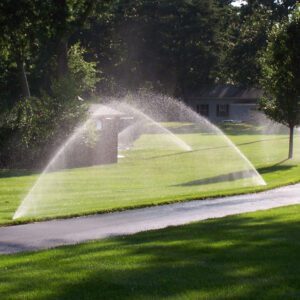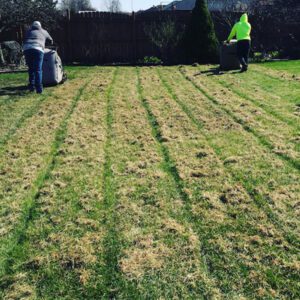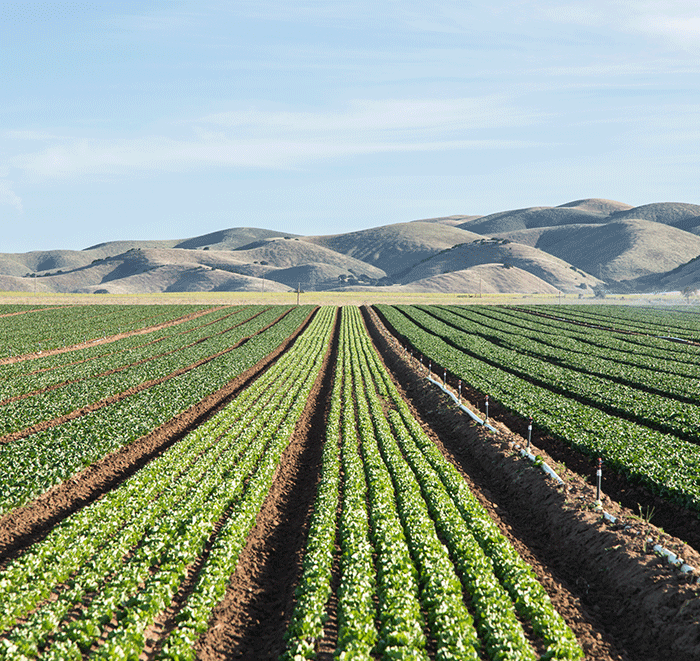Use the Root Zone to Mitigate Turf Grass Stressors
The root zone of turf grass provides important support for the plant and ensures that the turf grows so it can be used by golfers and enjoyed by families as well as to beautify public spaces. Even though they are unseen, roots are vital to growing lush, long-lasting turf as they pull nutrients and water from the soil and give the plant physical support.
“Roots are the lifeline of the plant and having a good root system is the pivotal point of having good, strong turf. Roots have a lot of challenges thrown at them, but a strategic management plan will ensure healthy and useable turf,” said Jason Otto, Wilbur-Ellis district sales manager and turf expert located in Washington.
External stress factors of turf can be caused by both the environment and management practices. Air and water movement in the soil are the two key components to supporting a healthy root zone. Regardless of whether the turf manager can control these stressors, there are ways to navigate them, according to Otto. He and other Wilbur-Ellis turf specialists are resources for turf managers, helping pinpoint issues and developing management tactics to grow lush, durable turf.
1. Hot or cold, wet or dry
Temperature and moisture are the two greatest weather impacts on turf grass. Growers can exacerbate problems caused by rainfall by over or under-irrigating turf. In cooler environments where rainfall is plentiful, soil can become oversaturated making nutrients less available to the plants.
“Extreme temperature and moisture conditions can cause the roots of the plants to shrink, and ultimately lead to the plant dying,” said Otto.
Quick changes in temperature, especially at the beginning of the season when it is getting warm can shock turf. Areas that experience longer cool seasons are more prone to this shock. Making sure turf is properly nourished and irrigated helps the plants withstand this stress.
In cooler environments, it is also important to not over-water grasses with an already shallow root system. Oversaturation of the soil constricts air movement and oxygen in the soil preventing nutrient uptake.

2. Know when to mow, dethatch and aerate
Turf managers can also cause abiotic stress with too much mowing or over-thatching. However, too much thatch can lead to soil compaction and restrict root growth and development. Verticutting, or not verticutting enough can also contribute to these conditions.
Responsible thatch management is a turf manager’s strongest tool when it comes to keeping the root zone healthy.
“The thatch layer is somewhat of a necessary evil. You want some thatch to keep the root zone rigid so it can handle the foot traffic and the stress. I think the more you can do to help break up that layer and enhance water and air movement, the thicker turf you are going to have as a result. Managing that thatch layer is key to growing good turf,” stated Otto.
If water cannot get through the thatch layer, it will have a harder time distributing uniformly throughout the root zone. Roots will react by staying in the upper layer of the soil where they are unable to reach the nutrients that are further down in the soil profile.
Thoroughly dethatching twice a year, once in the spring and once in the fall, is enough to remove unwanted thatch from your turf, without disturbing the plant too much. This is also a great time to apply soil health products like humic acids or biologicals.

3. Humic acid, biologicals and your root zone
“Applying wetting agents to help water and other inputs move evenly through the soil profile in the spring when the soil is softening up and after thatching or verticutting allows for the products to reach the level of the soil where they can have the most impact on the root zone. That timing is really important,” said Otto.
Spring is the best time to boost the chemical and biological components within the root zone and to enhance soil health. NUTRIO® BIOSOAK® is a humic acid and biological soil amendment and wetting agent that improves water and nutrient distribution and availability in the root zone. It also adds beneficial microbes to the soil to promote root health.
“Humic acids help buffer the soil and increase the cation exchange capacity of the soil. They may also have a stimulatory effect on both inoculated and native soil microbes. Getting the microbial activity in the root zone to work for you by making nutrients more available is key to healthy plants,” emphasized Otto.
Using a humic acid with a wetting agent included in it, followed by rain or a small amount of irrigation sets up the soil for the season. Then adding other products like LINK FOURTIPLEX® or LYNK DYNAMIC IRON® once it is dry gives your turf a solid nutritional foundation.
4. Assess the environment for your turf
Shade caused by trees and shrubs can greatly impact the quality of turf by preventing quality sunlight from reaching the plants. Low sunlight fosters the growth of algae or moss and can lead to thin turf.
“If you don’t have good shade or good sunlight, or alternatively if you have too much shade and not enough sunlight, then you’re always going to have thin, struggling turf. At times you’re going to have to decide whether you want higher quality turf or if you should remove the problem,” explains Otto.
Walking and driving golf carts or mowing equipment on the turf, particularly when the soil is wet, can also negatively impact the root zone through compaction, further disrupting airflow and leading to unhealthy turf.
5. Rely on your team
“At Wilbur-Ellis, we pride ourselves on being a well-educated outside resource and trusted partner for growers. Even if our job title is ‘sales’ at the end of the day we’re also agronomists that help solve problems,” said Otto.
Reach out to your local Wilbur-Ellis location today to contact an expert in your region and start working towards healthy, functional turf. Work with us today!

